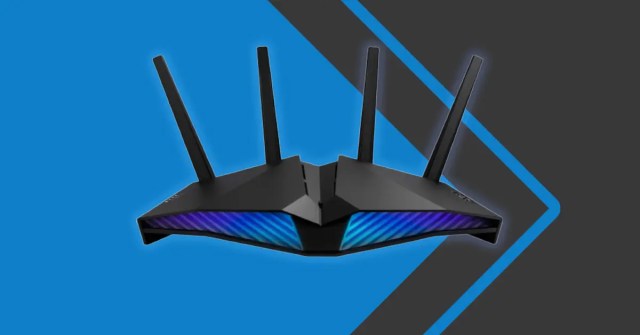
TP-Link’s Kasa Smart Wi-Fi Light Switches: Detailed Comparison
This website uses affiliate links to generate revenue, meaning we earn a small commission at no extra cost to you when you purchase through our links. Check out my Affiliate Policy Here.
Smart lighting can be really useful. It allows you to control your lights directly from your home and automate those with the purpose that your lights turn on and off naturally. However, there’s a flaw with those frameworks – on the off chance that you, or somebody you live with, turn off the lights at the switch, the power is cut to those lights.
That is the place where smart light switches come in. Without a doubt, you can’t utilize them to set the lights you own to astounding colors, however, whether you control them from the switch or your smartphone, the lights will remain connected and accessible.
For this blog post, we have a closer look at the three prime versions of smart switches introduced by KASA (HS200, HS210, and HS220). These switches are the key examples of modern-day savvy world and let you control your lighting arrangement hassle-free. Let’s cut to the chase and find out key use cases and features of each!
Detailed Specifications
| HS200 | HS210 | HS220 | |
| Connectivity | Wi-Fi | Wi-Fi | Wi-Fi |
| Mount Type | Electrical Box Install | Electrical Box Install | Electrical Box Install |
| Operating System | iOS/Android | iOS/Android | iOS/Android |
| Dimmer Support | NO | NO | YES |
| Power Load | 600 W at 15 A (Incandescent) | 1800 W at 15 A (Resistive) 720 W at 6 A (Incandescent) | 150 W (LED) 300 W (Incandescent) |
| Supported Voltages | 100 to 120 VAC | 100 to 120 VAC | 100 to 120 VAC |
| LED Indicators | NA | YES | YES |
| Dimensions | 5.0 x 3.3 x 1.5″ / 12.7 x 8.4 x 3.8 cm | 3.4 x 1.8 x 5.0″ / 85.1 x 45.0 x 128.0 mm | 3.4 x 1.8 x 5.0″ / 85.1 x 45.0 x 128.0 mm |
| Weight | 133 g | 109 g | 109 g |
| Price | Shop on Amazon | Shop on Amazon | Shop on Amazon |
HS200: Use Case & Features

The primary thing to note about the HS200 is its structure: It’s an attractive device. Using the switch is quite simple: Press it for on, press it for off. It has a nice click to it and since it’s big, you ought to experience difficulty finding the lights around evening time.
Additionally, it’s compatible with the application, which is called Kasa and is essentially structured. The application is split into a couple of various segments: gadgets, cameras, scenes, smart activities, and notifications. After you have your major arrangements done, you’ll set up your home automation. If you have motion sensors, for instance, you can set the lights to turn on naturally when they detect any movement.
Fortunately, the HS200 works with both Amazon Alexa and Google Assistant, and it’s very easy to use both of them: Simply connect your TP-Link credentials, and you would then be able to ask Google or Alexa to turn your switch on or off without getting off the lounge chair.
HS210: Use Case & Features

The HS210 highlights a built-in 2.4 GHz Wi-Fi network, empowering you to control the lighting in your home remotely from an iOS or Android device from any place with an Internet connection by means of TP-Link’s Kasa application.
The appropriately named Away-Mode allows you to turn your lights on when you’re away to make it to show up as if your house is occupied. Likewise, you’ll additionally have the option to set timers and countdowns and, as a little something extra, the HS210 unit is even equipped for identifying sunrise and sunsets with gives it an upper hand over the former one.
The HS210 model is intended to work with Alexa and Google Assistant, making controlling your lights with voice commands a flawless experience. Not to stress—if you prefer a progressively tactile activity, then the power, restart and reset buttons on the switch allow you direct control. Two wall plates are included to coordinate your home’s customary light switch.
HS220: Use Case & Features

The TP-Link HS220 has a very stylish and sophisticated design and build quality. It utilizes both terminals and pigtails. You’ll associate your line and load wires to terminals on the device, and connect your neutral and ground wires to the switch’s pigtails with wire nuts.
Despite the fact that the switch doesn’t have Kasa branding on it, it requires TP-Link’s Kasa application to run. Furthermore, as with TP-Link’s other smart switches, outlets, and smart bulbs, the application is very simple, streamlined, intuitive, and works without issues. The arrangement includes the standard transitory Wi-Fi access point connection, after which the Kasa application takes over the process. Things here are really basic, letting you power on/off, set brightness level, and assign preset levels on the fly. A simple timer and scheduling framework give you access to simple vacation controls.
The switch is likewise compatible with other Kasa family devices to smooth out a lot of this and can be paired with Amazon Alexa, Google Assistant, Microsoft Cortana, and IFTTT.




